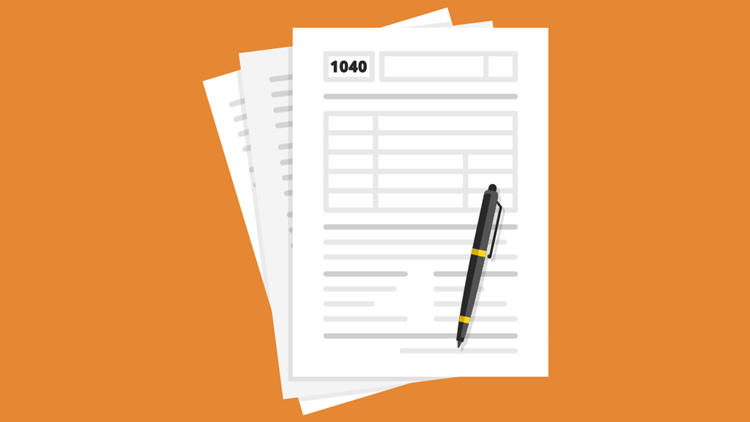by | Nov 26, 2021 | Tax Tips and News
The Internal Revenue Service is making a pitch about the Advance Child Tax Credit payments that smacks of the spiel for sale pricing from used car dealers: “When it’s gone, it’s gone!”
The IRS—thankfully minus the loud plaid sport coat—says after November 29, taxpayers won’t be able to post any changes in their income and get a larger payment on December 15, the last scheduled payment in 2021.
Any income updates must be posted through the Child Tax Credit Update Portal (CTC-UP) by 11:59 p.m. Eastern Time on November 29 to be included in the December payment.
The portal can be accessed at IRS.gov/childtaxcredit2021.
The IRS also had good news for Spanish speakers this week, launching a Spanish-language version of the CTC-UP that helps more families update their income figures ahead of the last remaining advance payment.
Advance payments of the CTC were made possible by the American Rescue Plan. Most qualifying families started getting their advance payments in July.
Eligible families could get advance payments of up to $300 monthly for each child under the age of 6, and up to $250 per month for each child between the ages of 6 and 17.
Payments were based on 2019 or 2020 filed returns, although some recipients registered online through the Child Tax Credit Update Portal to qualify. The CTC-UP was pivotal, allowing taxpayers to verify the qualifications for the credit, but also gave them the ability to perform other actions:
- Switch from receiving a paper check to direct deposit;
- Change the account where their payment is direct deposited;
- Update their mailing address;
- Stop monthly payments and
- Report significant changes in their income that could potentially raise or lower their monthly payments.
The advance payments, however, are only half the Child Tax Credit story. The advance payments amount to only half of the total credit amount for any taxpayer. The taxpayer receives the remaining half of the credit when they file their 2021 income tax return next year.
Families who got advance payments of the CTC in 2021 will also receive Letter 6419 early next year, documenting the advance payments they received in 2021 and the number of qualifying children they reported to figure their advance payments.
What’s on tap for 2022?
Advance payment of the Child Tax Credit may not be on the table for next year, but that doesn’t mean the credit will be out of reach of deserving taxpayers.
The IRS says eligible families—whether they typically file a return or not—will be able to receive a lump-sum payment of the CTC once they file a 2021 return next year.
To that end, the agency is encouraging its industry partners and community groups to share information and to use available online tools to help low-income families, non-filers and other underserved groups learn about the benefits of the Child Tax Credit and how to sign up.
Links to these online tools, answers to frequently asked questions and other resources can be found on the IRS’ special advance CTC 2021 page.
Source: IR-2021-235
– Story provided by TaxingSubjects.com
by | Nov 24, 2021 | Tax Tips and News
In October, we told readers about IRS relief measures that applied to some 19 Mississippi counties impacted by Hurricane Ida. That relief has now been expanded to add 63 other counties, covering the entire state, and pushing various tax filing and payment deadlines to Jan. 3, 2022.
The expansion of the IRS relief was put in motion by the Federal Emergency Management Agency (FEMA) and its decision to add the remainder of the state’s counties to the 19 that had already been designated as eligible for federal disaster aid due to Hurricane Ida.
The current list of eligible locations can be found on the disaster relief page of IRS.gov.
The relief period previously applied to the 63 newest counties by the IRS expired November 1.
What is the structure of the relief?
The newest round of IRS relief follows a pattern used with a number of U.S. disasters this year. It postpones various tax filing and payment deadlines that started on Aug. 28, 2021. Individual taxpayers and businesses within the new disaster area—namely, the entire state of Mississippi—now have until January 3 to file their returns and pay any taxes that would have been due during that time.
Individual taxpayers with valid extensions, however, should remember that while they have until Jan. 3, 2022 to file their extended returns, they do not have extra time to pay their tax due. Those payments were due on the original due date of their returns, May 17, so they aren’t covered by the IRS extended deadline.
Business deadlines are extended
Business taxpayers also have a number of deadlines extended through the IRS relief.
Quarterly estimated income tax payments normally due in September and quarterly payroll and excise tax returns otherwise due in November are all due now on January 3.
Other business filings have also been extended, including:
- Businesses with an original or extended due date
- Calendar-year partnerships and S corporations with 2020 extensions that ran out in September
- Calendar-year corporations with 2020 extensions that ran out in October
- Calendar-year tax-exempt organization with 2020 extensions that ran out in November
For details on other types of returns, payments and other tax actions that qualify for the extended deadline, see the IRS disaster relief page.
Relief is automatic
There’s no need for taxpayers—whether individual or business—to contact the IRS to see if they qualify for the extended deadlines. Here’s how it works:
The IRS screens each return, checking the taxpayer’s address of record. Addresses within the disaster area are automatically given all the benefits in the relief package.
Some taxpayers may get late-filing or late-payment notices due to the circumstances of the disaster; those taxpayers within the disaster area can call the telephone number printed on the notice to have the penalty abated.
Taxpayers who qualify for relief but live outside the disaster area should call the IRS at 866.562.5227. This includes taxpayers whose tax records needed to meet a deadline are inside the disaster area, and relief workers who live outside the disaster area but are helping with the recovery effort and work for a recognized government or philanthropic organization.
Claiming a loss on returns
Taxpayers claiming uninsured or unreimbursed losses due to Hurricane Ida can choose to claim those losses on the return for the year the loss occurred (meaning the 2021 return normally filed next year), or on the prior year return (2020).
In either case, taxpayers are reminded to write the FEMA disaster declaration number on the return claiming the loss: EM-3569 for a return claiming a loss under the original disaster declaration, or EM-4626 for a return claiming a loss under the expanded declaration.
See Publication 547 for more about claiming a loss on tax returns.
The IRS says its tax relief measures are based on local damage assessments by FEMA and are part of a coordinated federal response to the disaster. See DisasterAssistance.gov for more on disaster and the federal response.
Source: IR-2021-230
– Story provided by TaxingSubjects.com
by | Nov 23, 2021 | Tax Tips and News
The Internal Revenue Service says tax professionals spoke—and the agency listened. After getting comments from tax pros, the IRS has now increased the number of transcripts a professional preparer can get on any one client.
The previous limit was 10 transcripts for a single client, but now, the IRS says, practitioners can get up to 30 Transcript Delivery System (TDS) transcripts for a client using the Practitioner Priority Service line, also called PPS.
A variety of transcript types can be obtained through PPS and tax pros can order transcripts for up to five clients in a single call. The number of clients on a single call, however, hasn’t changed.
The new, increased limit covers:
- Tax Return Transcripts
- Tax Account Transcripts
- Wage and Income Transcripts
- Records of Account
- Verification of Non-Filing Letters
Other transcripts continue to be limited to 10 per client and will count toward the total of 30 transcripts per client.
“Increasing the number of transcripts a caller can receive addresses the concerns the IRS has received from PPS callers. This is another example of addressing concerns from our partners and stakeholders,” said Ken Corbin, the Wage and Investment Commissioner and the IRS Taxpayer Experience Officer.
Tax professionals can still order TDS transcripts through the Transcript Delivery System application, found on IRS.gov.
For individual taxpayers, the IRS tool Get Transcript is still the fastest way to get a transcript.
It’s worth remembering that while a transcript can show return and account data, it’s not a direct copy of the actual return. If a photocopy of a return is needed, complete and mail Form 4506, Request for Copy of Tax Return, along with the applicable fee.
More information about tax transcripts and delivery options can be found at Transcript Types and Ways to Order Them on IRS.gov.
Source: IR-2021-226
– Story provided by TaxingSubjects.com
by | Nov 18, 2021 | Tax Tips and News
The Internal Revenue Service is doing a little extra to help those taxpayers who have suffered from the wildfires in California. The agency is pushing back the deadlines for filing and paying various individual tax returns to January 3.
The deadlines were originally extended by an August relief package and were scheduled to end November 15. The Federal Emergency Management Agency (FEMA) ended the incident period for the disaster on October 25, which mean the IRS relief period would close on December 25.
The IRS has to provide at least an additional 60 days of disaster relief by law, after FEMA’s incident period closes.
This extension of time to file and pay applies to taxpayers in any part of California that is within the FEMA declaration for either public or individual assistance. Currently, it covers those in Lassen, Nevada, Placer, Plumas, Tehama and Trinity counties, but other locations could be added later. If new locations are added, they’ll automatically be included in the IRS relief package.
To see the most up-to-date list of eligible counties, visit the disaster relief webpage on IRS.gov.
What are the terms of the relief?
The IRS relief for the wildfires generally follows the pattern the agency has taken with other disasters. In this case, the relief postpones filing and payment deadlines that started on July 14 of this year and delays those deadlines until Jan. 3, 2022. Taxpayers who had extensions to file a 2020 return that ran out on October 21 have until the January 3 date to file.
Payment, however, is not extended, since payment connected to those extended returns was originally due in May – before the disaster period began.
What else is covered by the relief?
Businesses also have more time under the IRS measure. Quarterly estimated income tax payments due in September are now delayed until January 3, as are quarterly payroll and excise tax returns that were normally due on August 2 and November 1.
Extended due dates are also granted to calendar-year partnerships and S corporations with 2020 extensions that ran out in September, calendar-year corporations with 2020 extensions ending October 15, and calendar-year tax-exempt groups with 2020 extensions that ran out November 15.
See the IRS disaster relief page for more details on all the aspects of the relief package, including returns, payments and what actions qualify for additional time.
No action needed to qualify
Terms of the IRS relief measures are granted automatically; no action is needed on the part of taxpayers.
The IRS uses the address it has on record to check that the taxpayer lives within the bounds of the latest FEMA disaster area.
If qualified taxpayers within the disaster area happen to receive a penalty notice with a due date within the postponement period – either for filing late or paying late – they should call the IRS to see about having the penalty abated. The phone number will appear on the notice.
Taxpayers, whether individuals or businesses, have a choice when it comes to reporting losses from the wildfires. Uninsured or unreimbursed losses can be claimed on the return for the year the loss occurred – in this case, 2021, normally filed next year – or on the return for the prior year, 2020.
In either instance, taxpayers should write the FEMA declaration number, DR-4610, on the return. For more on claiming disaster-related losses, check out Publication 547.
The IRS says its tax relief measures are part of the government’s coordinated response to the wildfires and is based on FEMA’s damage assessments. To learn more about the federal disaster recovery measures, visit DisasterAssistance.gov.
Source: IR-2021-224
– Story provided by TaxingSubjects.com
by | Nov 17, 2021 | Tax Tips and News
As the economy warms up in recovery mode, inflation starts to raise its ugly head. Everything—from baby food to new cars—costs more.
To keep up, the Internal Revenue Service has to update its tax processes and forms to adjust for inflation. So, the IRS has released the newest inflation adjustments for the 2022 tax year. They’ll generally apply to returns filed in 2023.
The full list is laid out in Revenue Procedure 2021-45.
What are the major changes?
The standard deduction generally leads the list of tax items of interest to taxpayers. Because of the adjustment for inflation, married couples filing jointly will see their standard deduction rise $800 to $25,900 for tax year 2022.
Singles and married taxpayers filing separately will see their standard deduction go up $400 to $12,950.
Heads of household also get a higher standard deduction; theirs rises by $600 to $19,400.
Not everything increases, though. The personal exemption stays at zero for tax year 2022, just like the prior year. The personal exemption was eliminated by the Tax Cuts and Jobs Act, signed into law in late 2017.
What are the marginal rates?
There’s no change in the top tax rate for tax year 2022; that remains at 37% for single taxpayers with income greater than $539,900 or for married taxpayers filing jointly with incomes above $647,850.
Other rates include:
- 35%, for incomes over $215,950 ($431,900 for married couples filing jointly);
- 32% for incomes over $170,050 ($340,100 for married couples filing jointly);
- 24% for incomes over $89,075 ($178,150 for married couples filing jointly);
- 22% for incomes over $41,775 ($83,550 for married couples filing jointly);
- 12% for incomes over $10,275 ($20,550 for married couples filing jointly).
- The lowest rate is 10% for incomes of single individuals with incomes of $10,275 or less ($20,550 for married couples filing jointly).
There’s no limit on itemized deductions in 2022, like the previous four tax years. The limitation was wiped out by the Tax Cuts and Jobs Act.
The Alternative Minimum Tax exemption for 2022 got a boost; the exemption amount goes up to $75,900 from 2021’s $73,600. Phase-out ranges were also increased.
Other various rate increases include:
Earned Income Tax Credit – The maximum EITC amount is marginally higher, rising from $6,728 to $6,935 for qualifying taxpayers with three or more children in tax year 2022. Revenue Procedure 2021-45 has details on other maximum levels, income thresholds and phase-outs.
Transportation Fringe Benefit – In 2022, the monthly limit for the qualified transportation fringe benefit and the limitation for qualified parking goes up to $280.
Foreign Income Exclusion – The exclusion for foreign earned income increases to $112,000 for tax year 2022. The 2021 exclusion was $108,700.
Gifts – For 2022, the exclusion for gifts is raised to an annual maximum of $16,000, an increase of $1,000 from the prior tax year.
Adoptions – The maximum credit for adoptions in tax year 2022 is increased to $14,890, up from $14,440 in 2021.
For more information on these and other rates, maximums and health account limits, see Revenue Procedure 2021-45.
Source: IR-2021-219
– Story provided by TaxingSubjects.com
by | Nov 12, 2021 | Tax Tips and News
The Internal Revenue Service is pushing out more information for taxpayers interested in the Child Tax Credit and its advance payments.
The IRS has updated its online list of frequently asked questions, or FAQs, for the 2021 Child Tax Credit and the Advance Child Tax Credit Payments.
The new verbiage describes how taxpayers can provide an estimate of their 2021 income to the IRS using the Child Tax Credit Update Portal (CTC UP).
The FAQs, the IRS says, are being updated to give more information to taxpayers and tax professionals alike as quickly as possible. The information for tax pros includes helpful advice on how practitioners can rely on the data within the Internal Revenue Bulletin—beyond that provided only in the FAQs.
More on the Advance Child Tax Credit
Beyond the updated FAQs, the IRS has also come up with a special web page on the Advance Child Tax Credit Payments in 2021. It aims to deliver up-to-date information about the credit and its advance payments. Visit the new web page at IRS.gov/childtaxcredit2021.
In order to help non-filers, low-income families and other underserved groups sign up for the credit, the IRS urges its partner organizations and community groups to share their information and take advantage of the agency’s online tools and toolkits.
Individuals can check whether they are eligible for the credit by visiting the Advance Child Tax Credit Eligibility Assistant.
The tool has its own set of frequently asked questions as well as direct links to the portal, links to the Non-filer Sign-up Tool and to the Child Tax Credit Eligibility Assistant, and other helpful resources.
Sources: IR-2021-218; General Overview of Taxpayer Reliance on Guidance Published in the Internal Revenue Bulletin and FAQs
– Story provided by TaxingSubjects.com






